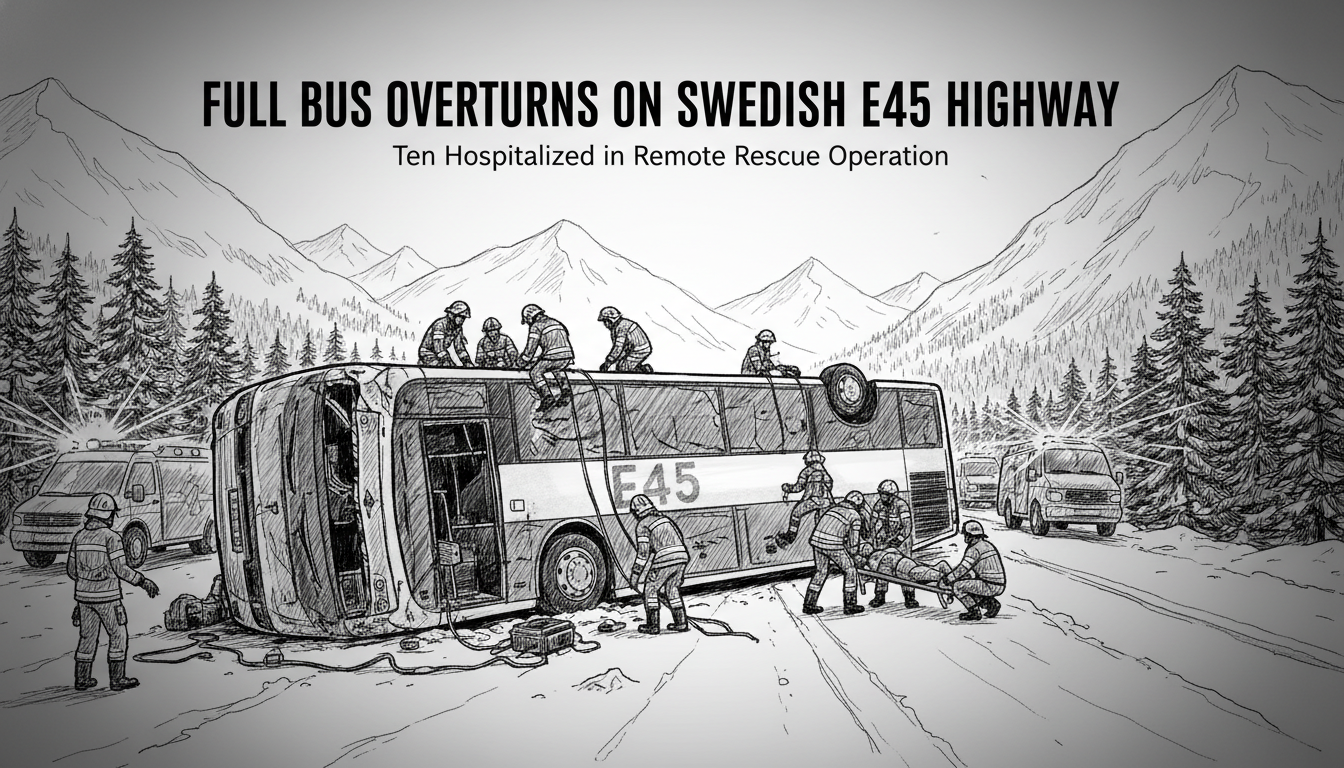A fully occupied bus has overturned on the E45 highway in northern Sweden. The accident occurred between Storuman and Vilhelmina. Emergency services transported ten people to hospitals. At least one passenger remained trapped inside the vehicle according to rescue officials.
Fifty-six passengers and the driver were traveling on the bus when it overturned. The total number of injured people remains unclear. Rescue teams worked to free trapped individuals. Police have launched an investigation into the cause.
Anna Gunnefur, a team leader with emergency services, confirmed the situation. She said rescue crews faced complex extraction challenges. The accident occurred on a major transit route through Swedish Lapland.
This highway incident highlights Sweden's ongoing road safety challenges. The E45 serves as a crucial transportation artery through Scandinavia's northern regions. It connects remote communities across some of Europe's most sparsely populated areas.
Bus travel remains essential in rural Sweden where distances are vast. The country maintains generally high road safety standards. Yet accidents like this reveal vulnerabilities in remote transportation networks. Emergency response times can be longer in these northern territories.
Similar incidents have occurred on Nordic highways during winter months. Sweden typically sees several major bus accidents annually. The country has invested heavily in improving road safety infrastructure. These efforts include better signage, guardrails, and winter maintenance programs.
International visitors should note that Swedish emergency services maintain high response standards. The country's trauma care system ranks among Europe's best. Travelers using rural highways should always check road conditions and weather forecasts.
What causes buses to overturn on modern highways? Vehicle speed, road conditions, and driver experience all play roles. Swedish authorities will examine all factors in their investigation. The results could influence future safety regulations for commercial passenger transport.
The accident's impact extends beyond immediate injuries. Dozens of passengers experienced significant trauma. Families across Sweden await news about loved ones. The bus company faces scrutiny about its safety protocols and driver training.
Northern Sweden's transportation network must balance accessibility with safety. Remote communities depend on reliable bus connections. Yet long distances and challenging weather create inherent risks. This accident may prompt renewed discussion about infrastructure investments in the region.

